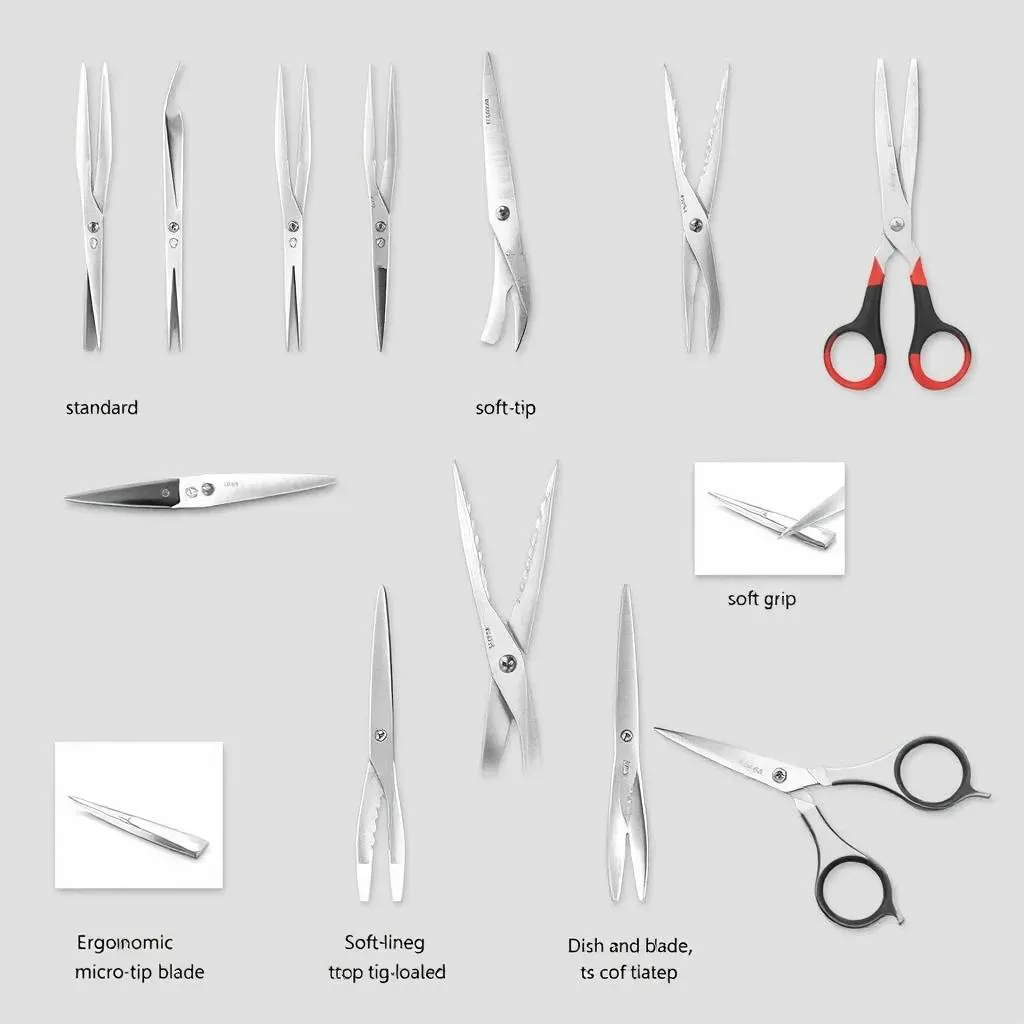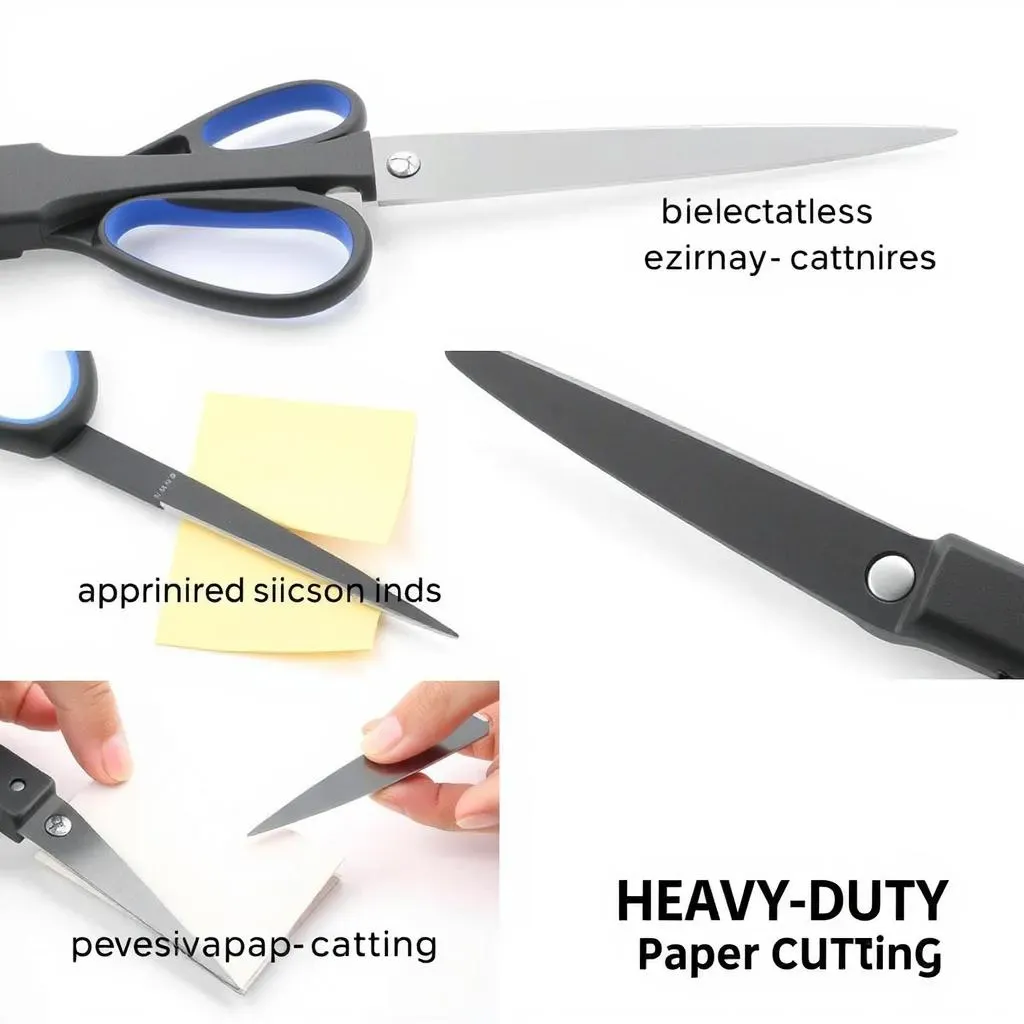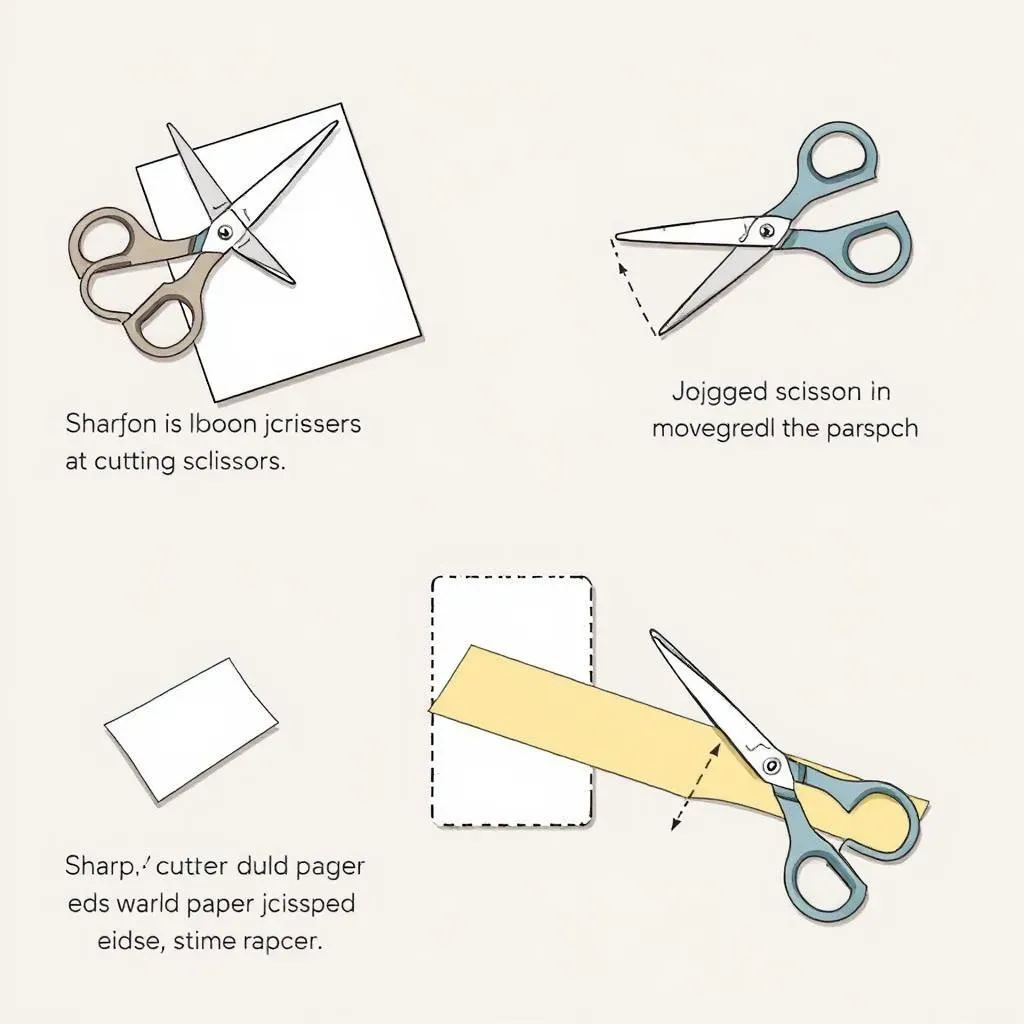Table of Contents
Ever wrestled with flimsy scissors that leave your paper looking ragged? Or struggled to find the right tool for a delicate craft project? Finding the perfect pair of scissors can make all the difference, transforming a frustrating task into a precise and enjoyable experience. This comprehensive guide tackles the question: "what are the best scissors for cutting paper?" We'll explore the wide world of paper-cutting scissors, examining different types, features, and their suitability for various tasks. From everyday office use to intricate paper crafting, we'll help you navigate the options and choose the ideal tool. Prepare to discover sharp blades, comfortable grips, and the satisfying precision of a perfect cut. We'll cover essential factors to consider when making your selection, highlighting top picks for various needs, and offering solutions to common cutting problems. Get ready to elevate your paper-cutting game!
Choosing the Right Scissors for Cutting Paper: A Guide to Types and Features
Choosing the Right Scissors for Cutting Paper: A Guide to Types and Features
Understanding Blade Types
Let's start with the heart of the matter: the blades. The sharpness and type of blade significantly impact your cutting experience. Many scissors feature standard blades, perfect for everyday tasks like cutting paper for school projects or office work. However, for more intricate work, consider micro-tip scissors, which offer incredible precision for detailed cutting. These are a crafter's best friend for creating delicate designs and intricate shapes. For heavier-duty tasks like cutting through multiple layers of cardstock or thicker paper, you might want to look at titanium-bonded blades, known for their durability and sharpness. They'll slice through tough materials with ease, saving you time and effort.
Choosing the right blade type is crucial for achieving the desired results. Think about the projects you'll be tackling. Need to cut clean lines for a precise design? Micro-tip scissors are your go-to. Facing thick cardstock? Titanium-bonded blades will handle the job. Remember, a sharp blade makes all the difference; it's the key to clean cuts and preventing frustrating tears.
- Standard Blades: General-purpose cutting
- Micro-Tip Blades: Precision and detail work
- Titanium-Bonded Blades: Heavy-duty cutting
The Importance of Handle Design
Now, let's talk about comfort and control. The handle design plays a surprisingly important role in how easily and efficiently you can cut. Ergonomic handles, designed to fit the natural curvature of your hand, offer superior comfort, especially during longer cutting sessions. This prevents hand fatigue and cramping, allowing you to work for extended periods without discomfort. Look for handles with a soft grip, which improves your control and prevents slippage. Some scissors even come with spring-loaded mechanisms to reduce strain on your hand and wrist. For left-handed users, specific left-handed scissors are a must-have; they're designed to prevent awkwardness and ensure precise cuts. Don't underestimate the importance of a good grip – it truly makes all the difference.
Consider the size and shape of the handles as well. Smaller handles are ideal for detailed work and smaller hands, while larger handles provide better leverage for cutting through thicker materials. The right handle design ensures you maintain control and precision throughout your project. Remember, comfortable handles translate to more efficient and enjoyable paper cutting.
Additional Features to Consider
Beyond blades and handles, several other features enhance the paper-cutting experience. Non-stick blades are a game-changer, preventing sticky materials like glue or tape from accumulating on the blades. This keeps your scissors clean and working smoothly for longer. Some scissors boast a reinforced central screw, enhancing durability and ensuring the blades remain aligned for consistently clean cuts. This is important for maintaining the sharpness and precision of your scissors. For those who value aesthetics, decorative scissors add a touch of personality to your crafting space. While the functionality might be similar to standard scissors, the unique designs add a creative flair.
Think about the features that matter most to you. Do you need non-stick blades for messy crafts? Are you looking for extra durability? Do you want to add a personal touch with a decorative design? Weighing these factors ensures you'll find the perfect scissors to suit your style and needs. Selecting the right scissors is more than just picking a tool; it's about optimizing your crafting experience.
Feature | Benefit |
|---|---|
Non-stick blades | Prevents sticky residue build-up |
Reinforced screw | Enhances durability and blade alignment |
Decorative designs | Adds personality to your crafting space |
Master Paper Cutting Techniques
Best Scissors for Cutting Paper: Top Picks for Different Needs
Best Scissors for Cutting Paper: Top Picks for Different Needs
Everyday Paper Cutting
For everyday paper-cutting needs – think school projects, office tasks, or quickly trimming papers – a good pair of general-purpose scissors is all you need. Look for scissors with sharp, standard blades and comfortable, ergonomic handles. Brands like Fiskars are known for their durability and reliability, offering a great balance of price and performance. These are workhorses, designed for consistent use and capable of handling various paper types and thicknesses. You don't need fancy features; just sharp blades and a comfortable grip make all the difference.
Don't overlook the importance of a comfortable grip. Prolonged use can lead to hand fatigue, so choose a pair that fits your hand well. A soft-grip handle is a nice addition, providing better control and reducing slippage. These everyday scissors are your go-to for simple, efficient paper cutting.
- Prioritize sharp, standard blades.
- Choose ergonomic handles for comfort.
- Consider a soft-grip for better control.
Precision Paper Crafting
When it comes to intricate paper crafts, precision is paramount. Here, micro-tip scissors reign supreme. Their fine, pointed blades allow for incredibly detailed cutting, perfect for creating delicate designs, intricate shapes, and small, precise cuts. These are invaluable for scrapbooking, card making, and any project requiring fine motor skills and attention to detail. Look for scissors with spring-loaded mechanisms to reduce hand strain during extended crafting sessions. Invest in a quality pair; they'll become your go-to tools for any project demanding precision.
Think about the types of projects you'll be undertaking. If you're working with delicate papers or creating intricate designs, micro-tip scissors are your best bet. Their ability to make precise cuts is essential for intricate paper art. A comfortable grip is also vital for maintaining control and preventing hand fatigue during long crafting sessions. Remember, the right tool can significantly enhance your crafting experience.
Intricate Paper Cutting Designs
Scissors Type | Best Use |
|---|---|
Micro-tip | Intricate paper crafts, scrapbooking |
Heavy-duty | Thick cardstock, multiple layers |
Heavy-Duty Paper Cutting
For heavier-duty tasks, such as cutting through multiple layers of thick cardstock, cardboard, or even fabric, you'll need heavy-duty scissors with titanium-bonded blades. These blades are exceptionally sharp and durable, slicing through tough materials without bending or dulling quickly. They're a must-have for projects requiring power and precision, such as creating layered cards or working with thicker paper stocks. Look for ergonomic handles to ensure comfort during extended use. Invest in a pair that can handle the workload; your hands and your projects will thank you.
Consider the materials you'll be cutting. If you frequently work with thick cardstock or multiple layers of paper, heavy-duty scissors are essential. The durability of titanium-bonded blades ensures clean cuts, even through the toughest materials. Remember, the right tool can make a significant difference in the efficiency and success of your projects.
What are the Best Scissors for Cutting Paper? Troubleshooting Common Cutting Problems
What are the Best Scissors for Cutting Paper? Troubleshooting Common Cutting Problems
Dealing with Jagged Edges
One common frustration is achieving clean, smooth cuts. Jagged edges are often caused by dull blades. Think of it like trying to cut a cake with a dull knife – it's messy! Sharpening your scissors regularly is crucial. If you're not comfortable sharpening them yourself, many craft stores offer sharpening services. Alternatively, investing in a good quality pair of scissors with durable blades will minimize the need for frequent sharpening. Another culprit could be using the wrong type of scissors for the job. For instance, using standard scissors for thick cardstock will likely result in jagged edges. Using the appropriate tool is half the battle; this means using micro-tip scissors for detailed work and heavy-duty scissors for thick materials. Finally, ensure you're using a proper cutting technique – keep the scissors closed as much as possible and move the paper, not the scissors.
Remember, prevention is better than cure. Regularly inspect your scissors for signs of dullness. A simple test is to try cutting a piece of paper; if it feels rough, it's time for sharpening. Using the correct type of scissors for the material is crucial for preventing jagged edges. Also, always use a firm, controlled cutting motion to avoid tears and uneven cuts. Proper technique and maintenance are key to success.
- Sharpen your scissors regularly.
- Use the correct type of scissors for the material.
- Employ proper cutting technique.
Essential Paper Cutting Supplies
Tackling Sticky Situations
Sticky situations, like cutting through adhesive tape or glued paper, can quickly gum up your scissors. This not only makes cutting difficult but also dulls the blades faster. The solution? Non-stick blades! These blades have a special coating that prevents adhesive materials from sticking to the surface. This keeps your scissors clean and efficient. If you don't have non-stick blades, a quick wipe with a damp cloth or paper towel after each use will help remove residue. For stubborn adhesive, you might need a little more elbow grease and a specialized adhesive remover. Remember, cleaning your scissors after each use prolongs their lifespan and keeps them cutting smoothly.
Prevention is key. Always use the appropriate tools for the job, and always clean your scissors after each use to avoid build-up. Non-stick blades are a worthwhile investment for crafters who regularly handle sticky materials. Regular maintenance is vital for preserving the sharpness and functionality of your scissors. A little preventative care goes a long way.
Problem | Solution |
|---|---|
Sticky residue | Non-stick blades, cleaning |
Dull blades | Sharpening, proper technique |